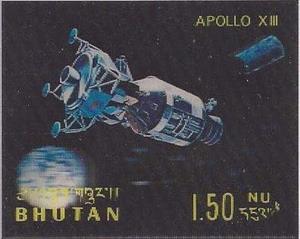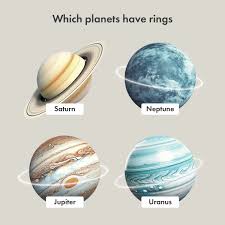Stamp: Apollo 13 (1970) (Bhutan 1970)
Apollo 13 (1970) (Bhutan 1970)
09 November (Bhutan ) within release Conquest of Space goes into circulation Stamp Apollo 13 (1970) face value 1.50 Bhutanese ngultrum
| Stamp Apollo 13 (1970) in catalogues | |
|---|---|
| Michel: | Mi:BT 419 |
| Stamp Number: | Sn:BT 118G |
| Yvert et Tellier: | Yt:BT 288 |
Stamp is horizontal format.
The plastic coating creates a three-dimensional effectAlso in the issue Conquest of Space:
- Stamp - Projectile from Verne's novel "From the Earth to the Moon" … face value 2;
- Stamp - V2 rocket (1942) face value 5;
- Stamp - Vostok 1 (1961) face value 15;
- Stamp - Mariner 2 (1962) face value 25;
- Stamp - Gemini 7 (1965) face value 30;
- Stamp - Rocket launching face value 50;
- Stamp - Edward White during space walk (1965) face value 75;
- Stamp - Apollo 13 (1970) face value 1.50;
Stamp Apollo 13 (1970) it reflects the thematic directions:
A planet is a large, rounded astronomical body that is generally required to be in orbit around a star, stellar remnant, or brown dwarf, and is not one itself. The Solar System has eight planets by the most restrictive definition of the term: the terrestrial planets Mercury, Venus, Earth, and Mars, and the giant planets Jupiter, Saturn, Uranus, and Neptune. The best available theory of planet formation is the nebular hypothesis, which posits that an interstellar cloud collapses out of a nebula to create a young protostar orbited by a protoplanetary disk. Planets grow in this disk by the gradual accumulation of material driven by gravity, a process called accretion.
A satellite or artificial satellite is an object, typically a spacecraft, placed into orbit around a celestial body. They have a variety of uses, including communication relay, weather forecasting, navigation (GPS), broadcasting, scientific research, and Earth observation. Additional military uses are reconnaissance, early warning, signals intelligence and, potentially, weapon delivery. Other satellites include the final rocket stages that place satellites in orbit and formerly useful satellites that later become defunct.
A spacecraft is a vehicle that is designed to fly and operate in outer space. Spacecraft are used for a variety of purposes, including communications, Earth observation, meteorology, navigation, space colonization, planetary exploration, and transportation of humans and cargo. All spacecraft except single-stage-to-orbit vehicles cannot get into space on their own, and require a launch vehicle (carrier rocket).




